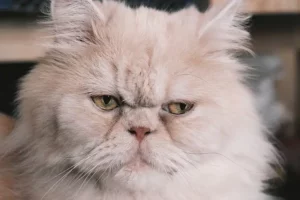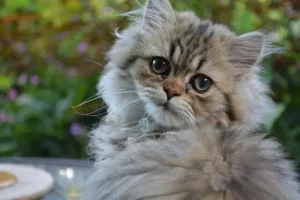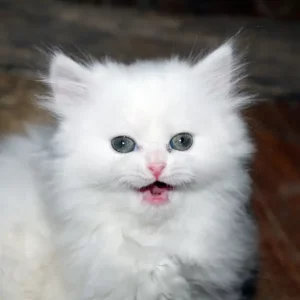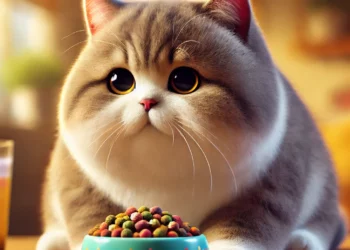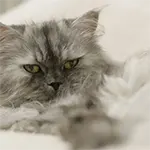
The Persian is a breed of cat characterized by having a wide and flat face and a large abundant coat. They are commonly regarded as aristocratic cats (75% of registered pedigree cats are Persian).
Summary
The Persian cat is one of the most iconic and recognizable cat breeds in the world, known for its luxurious long coat, expressive round eyes, and calm, affectionate demeanor. With a history that spans centuries, the Persian has become a symbol of elegance and grace. This guide will provide you with everything you need to know about the Persian cat, from its storied history to its specific care needs, making it the perfect resource for current and prospective Persian cat owners.
History of the Persian Cat
Ancient Origins
The Persian cat’s origins are believed to trace back to ancient Persia (modern-day Iran), hence the name. Long-haired cats resembling the Persian were first documented in the 1600s when they were brought to Europe by Italian and French explorers. These exotic cats quickly became prized possessions among European nobility, admired for their luxurious coats and regal appearance.
Development and Popularity
The breed was further developed in Britain during the 19th century, where selective breeding emphasized their distinctive flat faces, large eyes, and thick, flowing coats. Persian cats were showcased at some of the earliest cat shows, and their popularity continued to grow, especially in the United States, where they have consistently been one of the most popular cat breeds for decades.
The Persian’s distinctive look and gentle temperament have made it a favorite among cat fanciers and pet owners alike, solidifying its place as one of the most beloved cat breeds worldwide.
Physical Characteristics
Appearance and Size
Persian cats are medium to large-sized cats, typically weighing between 7 to 12 pounds, with a sturdy, muscular build. They have short, thick legs, a broad chest, and a short, thick neck, giving them a stocky appearance. Their round face is their most distinctive feature, characterized by large, round eyes, a short nose, and small, rounded ears set wide apart on their head.
Coat and Colors
The Persian’s coat is its most striking feature. It is long, thick, and incredibly soft, requiring regular grooming to maintain its beauty. The breed comes in a wide variety of colors and patterns, including solid, tabby, bicolor, calico, and more. Some of the most popular colors include white, blue, black, cream, and silver. The breed is also known for its “smoke” color pattern, where the fur is lighter at the base and darker at the tips, giving the coat a shimmering effect.
Personality and Temperament
Gentle and Affectionate
Persians are known for their calm, gentle nature. They are affectionate cats that enjoy being close to their human companions, often curling up in their laps or resting nearby. While they are not as playful or energetic as some other breeds, they are deeply loving and form strong bonds with their families.
Quiet and Laid-back
Unlike some cat breeds that are vocal and demanding, Persians tend to be quiet and undemanding. They are content to relax and watch the world go by, making them ideal companions for those who prefer a peaceful, serene environment. Their laid-back nature makes them particularly well-suited for apartment living or homes where a calm atmosphere is desired.
Interaction with Other Pets and Children
Persians are generally good with other pets and children, provided they are treated gently. Their docile nature means they are unlikely to start conflicts, but they may prefer to retreat to a quiet spot if the environment becomes too noisy or chaotic. They thrive in stable, predictable environments where they can feel secure.
Grooming and Maintenance
Coat Care
The Persian cat’s luxurious coat requires regular grooming to prevent matting and tangling. Daily brushing with a wide-tooth comb is recommended to keep the coat in top condition. Because their fur is so thick and long, Persians are prone to shedding, particularly during the spring and fall. Regular grooming not only keeps their coat looking beautiful but also helps reduce shedding and the formation of hairballs.
Bathing is also an essential part of maintaining a Persian’s coat. Many Persian owners bathe their cats once a month to keep their fur clean and free of oils. It’s important to use a cat-specific shampoo and to thoroughly dry the coat after bathing to prevent the cat from getting chilled.
Facial Care
Due to their flat faces, Persians are prone to tear staining, which can discolor the fur around their eyes. It’s important to clean their eyes daily with a damp cloth to remove any discharge and prevent staining. Regular cleaning also helps to avoid potential eye infections.
Dental and Nail Care
Like all cats, Persians benefit from regular dental care. Brushing their teeth several times a week with a cat-specific toothpaste can help prevent dental diseases. Their nails should also be trimmed every few weeks to prevent overgrowth and keep them from becoming too sharp. Providing scratching posts around your home can help them maintain healthy nails naturally.
Diet and Nutrition
Nutritional Requirements
Persians are generally low-energy cats, so their diet should be carefully managed to prevent obesity. A balanced diet rich in high-quality protein is essential to support their muscular build and maintain their coat’s health. Whether you choose dry kibble, wet food, or a combination of both, make sure the food is specifically formulated for their life stage—kitten, adult, or senior.
Portion Control
Because Persians are not as active as some other breeds, it’s important to monitor their food intake and provide measured portions based on their age, weight, and activity level. Avoid free-feeding and instead offer meals at specific times each day. Overfeeding can lead to weight gain and associated health issues, so it’s essential to keep their diet in check.
Hydration
As with all cats, ensuring that your Persian stays well-hydrated is crucial. Providing fresh water at all times is essential, and some cats may prefer running water from a cat fountain. Wet food can also contribute to their overall hydration, which is important for maintaining healthy kidneys and urinary function.
Health and Lifespan
Common Health Issues
While Persian cats are generally healthy, they are prone to certain health issues, many of which are related to their distinctive facial structure. Some of the common conditions seen in this breed include:
- Brachycephalic Syndrome: Due to their flat faces, Persians can experience breathing difficulties, especially in hot or stressful environments. It’s important to keep them cool and stress-free to minimize these risks.
- Polycystic Kidney Disease (PKD): This genetic condition causes cysts to form in the kidneys, leading to kidney dysfunction over time. Genetic testing can help identify PKD in breeding lines.
- Dental Issues: The breed’s flat face can contribute to dental problems, so regular dental care is essential to prevent tartar buildup and gum disease.
- Eye Problems: Due to their prominent eyes, Persians are prone to various eye conditions, including excessive tearing, conjunctivitis, and corneal ulcers. Regular eye cleaning and veterinary check-ups are important to manage these risks.
Lifespan
With proper care, Persian cats typically live between 12 to 15 years, although some can live longer. Ensuring they have a balanced diet, regular grooming, and routine health checks can help them lead a long, healthy life.
Tips for Living with a Persian Cat
Provide a Comfortable Environment
Persians thrive in a calm, comfortable environment. They enjoy having cozy spots where they can relax and observe their surroundings. Providing soft bedding, cat trees, and perches where your cat can retreat and feel safe will help them feel at home.
Regular Grooming Routine
Establish a regular grooming routine from a young age to keep your Persian’s coat in top condition. This not only helps maintain their appearance but also strengthens the bond between you and your cat. Regular grooming sessions also provide an opportunity to check for any signs of health problems, such as lumps, bumps, or skin issues.
Monitor Health and Weight
Persians can be prone to weight gain due to their low-energy lifestyle, so it’s important to monitor their diet and exercise regularly. Pay attention to any changes in behavior, appetite, or activity levels, as these can be early signs of health issues. Regular veterinary check-ups are also essential for maintaining your Persian’s overall health.
Social Interaction
While Persians are independent cats, they still enjoy the company of their human family members. Make sure to spend quality time interacting with your Persian, whether it’s through gentle play, grooming, or simply keeping them company. They don’t like being left alone for long periods, so if your household is often empty, consider getting another pet to keep them company.
FAQs about Persian Cats
Are Persian cats good with children?
Yes, Persian cats are known for their gentle and patient nature, making them excellent companions for families with children. They are tolerant and enjoy being around people, making them well-suited to a busy household.
How much grooming do Persian cats require?
Persian cats require daily grooming to keep their long, thick coats in good condition. Regular brushing, bathing, and facial cleaning are essential to prevent matting and reduce tear staining.
Do Persian cats get along with other pets?
Yes, Persian cats generally get along well with other pets, including dogs and other cats. Their calm and laid-back nature makes them a good fit for multi-pet households.
What health issues are common in Persian cats?
Persian cats are prone to certain health issues, including Brachycephalic Syndrome, Polycystic Kidney Disease (PKD), and dental problems due to their flat faces. Regular veterinary check-ups and good home care canCertainly! Here’s a comprehensive article on the Persian cat breed, covering all essential aspects, including history, physical characteristics, personality, grooming, and care tips. This article is designed to be informative, engaging, and user-friendly for anyone interested in this beloved cat breed.
Latest on CatOlympus
Effects Of Music On Cats: Do Cats Enjoy Music?
For many cat owners, music is a regular part of daily life. We play it while cooking, cleaning, relaxing, or...
Myths And Truths About Feeding Your Cat
Feeding your cat is more than just picking up the nearest bag of kibble. It’s about providing balanced nutrition to...
How To Ensure Your Cat Drinks Enough Water
Water is essential for life, and just like humans, cats need adequate hydration to maintain their health and well-being. However,...
How to Spot and Prevent Parasites In Cats
Parasites are an unfortunate but common issue that many cat owners will face at some point. These unwelcome visitors can...


